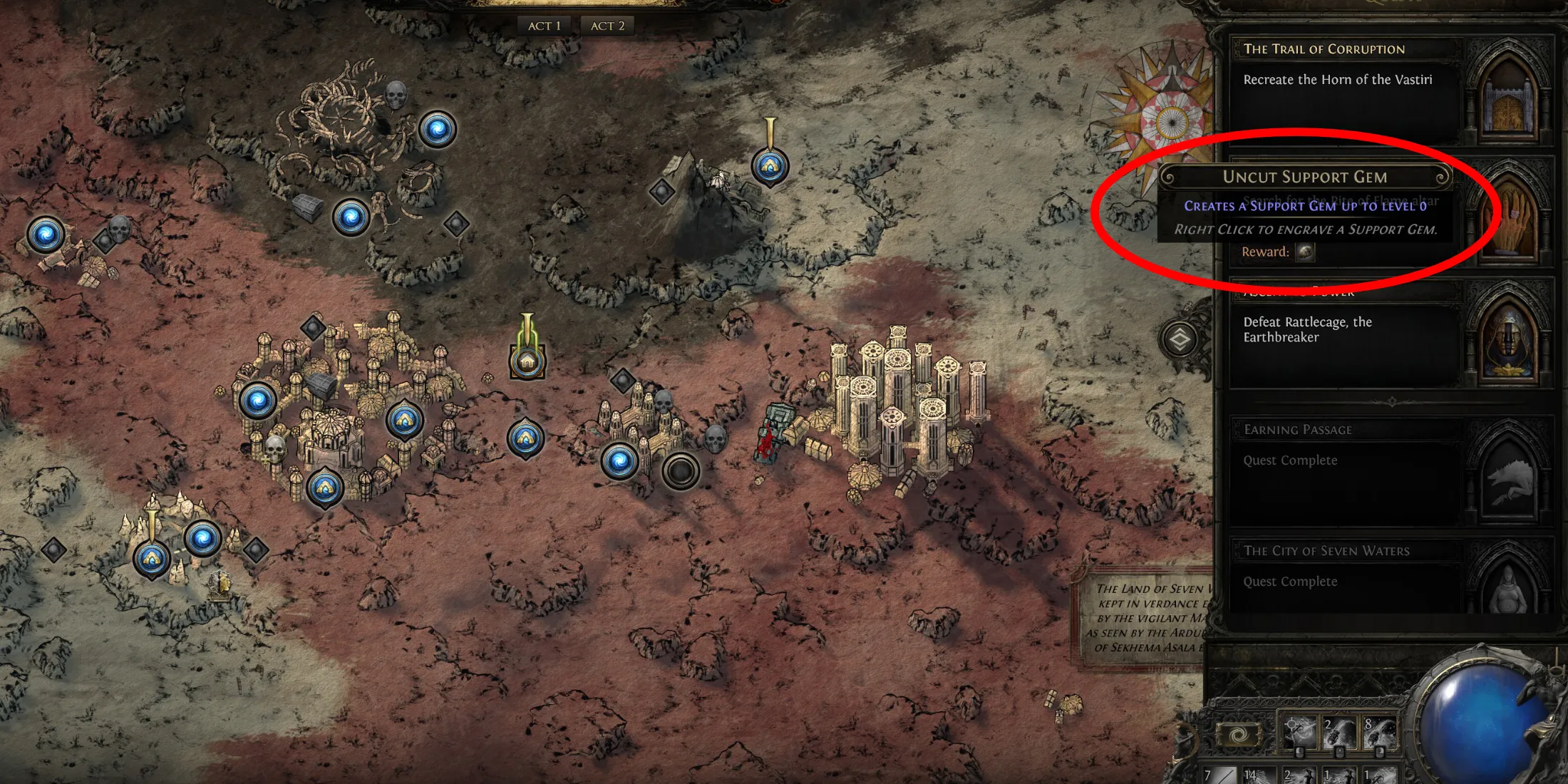
Overview of Path of Exile 2’s Gem System
- Path of Exile 2 incorporates an innovative Gems system featuring distinct categories: Active, Support, and Spirit Gems.
- Gems in this sequel possess built-in sockets, transforming the itemization strategy compared to the original game.
- Jeweller’s Orbs play a pivotal role in gem customization, influencing socket configurations and build adaptability, although they come with substantial costs.
Although Path of Exile 2 has shown promise in early access, it is challenging to determine if it represents a significant advancement over its predecessor. This difficulty arises primarily due to their substantial differences in core gameplay mechanics. Notably, the overall power level of builds in Path of Exile 2 appears more restrained than in the original, likely resulting from developer Grinding Gear Games’ (GGG) intention to create a more balanced experience following the decision to establish it as a standalone sequel. This contrasts sharply with the original game, which had experienced extensive power creep over many years. While the new Gem system has advantages over traditional armor sockets, it also introduces new challenges.
In contrast to the original Path of Exile, where players could easily acquire Gems from vendors, its sequel necessitates that players either find Uncut Gems through drops or engage in trades with others to obtain the Gems they require.
Evolution of Gems: Path of Exile 2 vs. PoE’s 6-Links





The fundamental shift in Path of Exile 2 resides in how Gems interact with sockets. Unlike its predecessor, where players needed to link Gems to armor sockets, the new system integrates sockets directly into the Gems themselves. While this presents advantages such as alleviating itemization burdens, it also raises concerns. Players may no longer need to prioritize finding high-link items, yet the pressure to optimize socket configurations has now transitioned to the Gems.
The Dual Nature of Jeweller’s Orbs in Path of Exile 2

To enhance a Gem’s socket capacity beyond its initial two, players must utilize Jeweller’s Orbs, which can be either Lesser, Greater, or Perfect. However, these Orbs are rare and often come at a high cost. For instance, players commonly exchange a Lesser Jeweller’s Orb for one Exalted Orb, while a Greater Jeweller’s Orb typically trades for one Divine Orb. This pricing illustrates that the economic landscape in Path of Exile 2 has not shifted significantly, as valuable items remain crucial for effective builds.
Currently, one Divine Orb is traded for an average of 69 Exalted Orbs on Path of Exile 2’s official trade website, highlighting the considerable expense of Greater Jeweller’s Orbs relative to their Lesser counterparts.
The scarcity and high cost associated with Jeweller’s Orbs may make experimenting with skills or switching builds prohibitively expensive. Moreover, many of the most effective Skill, Support, and Spirit Gems are only unlocked during the Cruel difficulty tier, generally after Act 3, which restricts early-game options, especially with numerous Gems yet to be introduced into the game.
Path of Exile 2: Redirecting Focus from Items to Gems
The implications of binding socket functionality directly to Gems mean that investing Jeweller’s Orbs into early-game Gems could be a questionable decision. Players will need to re-evaluate Gems as they progress, particularly since the sockets are exclusively tied to the Gems instead of gear. Successful endgame builds will likely require several five-linked Gems, a task that proves increasingly complex.
This new structure aids in decreasing the financial burden associated with item sockets since Armors now acquire sockets via Artificer’s Orbs. Nonetheless, this paradigm introduces its own set of challenges with regard to itemization, affecting new players, veterans, and those exploring various game dynamics. Whether substantial modifications will occur as early access advances remains uncertain, but any necessary changes may require considerable effort to implement effectively.




Leave a Reply ▼